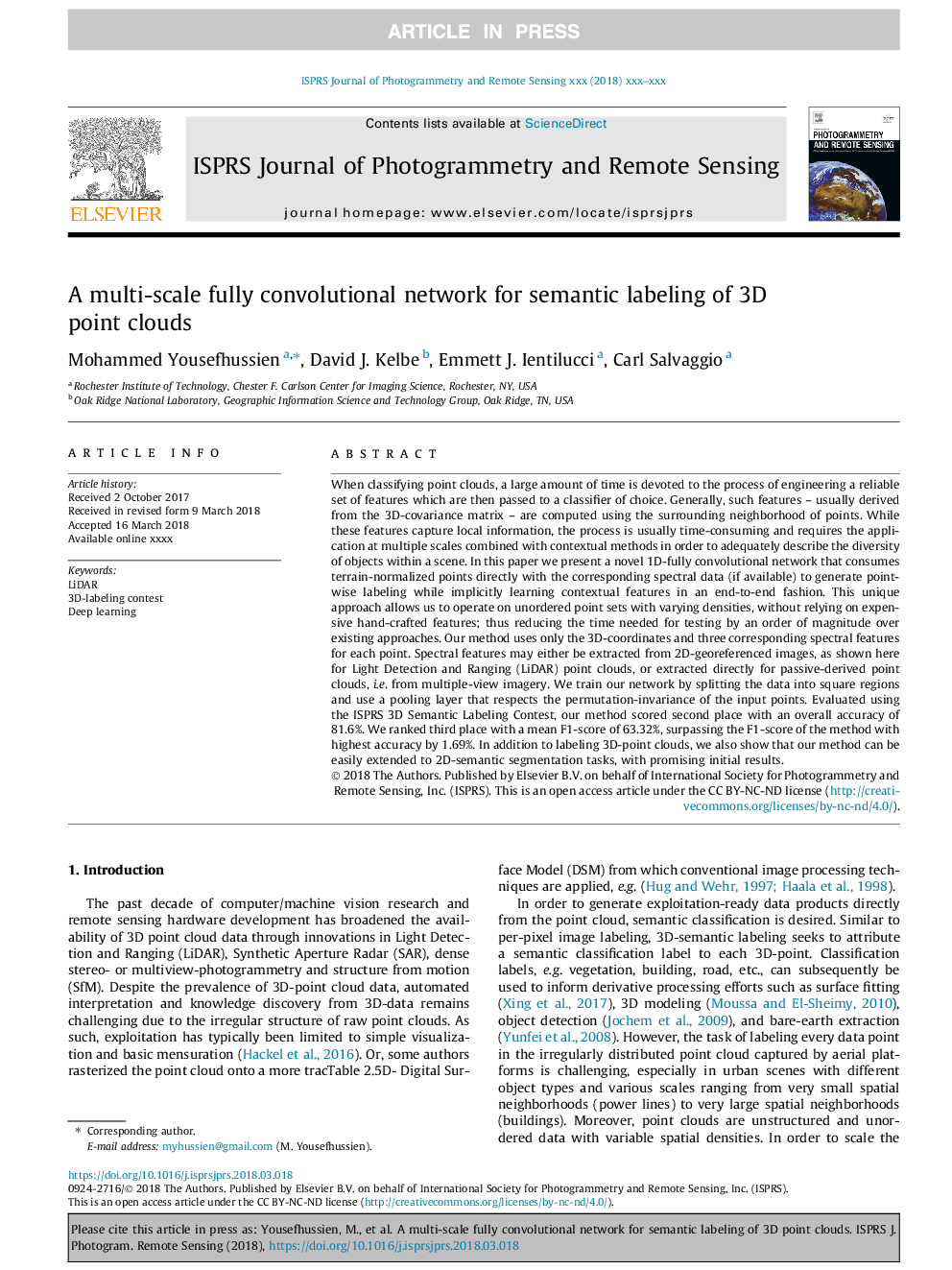| Article ID | Journal | Published Year | Pages | File Type |
|---|---|---|---|---|
| 6949063 | ISPRS Journal of Photogrammetry and Remote Sensing | 2018 | 14 Pages |
Abstract
When classifying point clouds, a large amount of time is devoted to the process of engineering a reliable set of features which are then passed to a classifier of choice. Generally, such features - usually derived from the 3D-covariance matrix - are computed using the surrounding neighborhood of points. While these features capture local information, the process is usually time-consuming and requires the application at multiple scales combined with contextual methods in order to adequately describe the diversity of objects within a scene. In this paper we present a novel 1D-fully convolutional network that consumes terrain-normalized points directly with the corresponding spectral data (if available) to generate point-wise labeling while implicitly learning contextual features in an end-to-end fashion. This unique approach allows us to operate on unordered point sets with varying densities, without relying on expensive hand-crafted features; thus reducing the time needed for testing by an order of magnitude over existing approaches. Our method uses only the 3D-coordinates and three corresponding spectral features for each point. Spectral features may either be extracted from 2D-georeferenced images, as shown here for Light Detection and Ranging (LiDAR) point clouds, or extracted directly for passive-derived point clouds, i.e. from multiple-view imagery. We train our network by splitting the data into square regions and use a pooling layer that respects the permutation-invariance of the input points. Evaluated using the ISPRS 3D Semantic Labeling Contest, our method scored second place with an overall accuracy of 81.6%. We ranked third place with a mean F1-score of 63.32%, surpassing the F1-score of the method with highest accuracy by 1.69%. In addition to labeling 3D-point clouds, we also show that our method can be easily extended to 2D-semantic segmentation tasks, with promising initial results.
Keywords
Related Topics
Physical Sciences and Engineering
Computer Science
Information Systems
Authors
Mohammed Yousefhussien, David J. Kelbe, Emmett J. Ientilucci, Carl Salvaggio,
